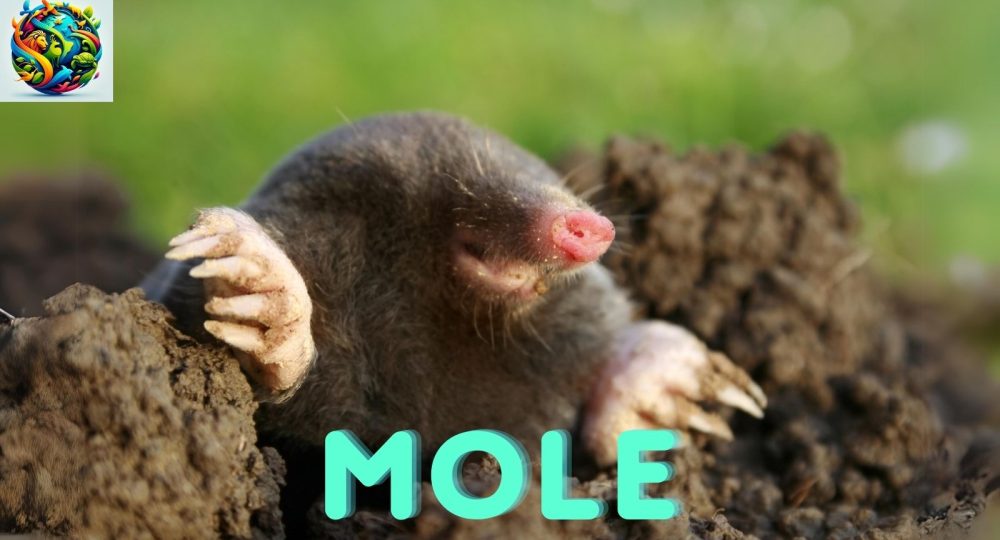
Moles: Nature’s Marvellous Subterranean Engineers
Moles: Nature’s Marvellous Subterranean Engineers
Beneath the surface of the earth, a fascinating world exists, largely unseen by human eyes. In this hidden realm, moles reign supreme as nature’s subterranean engineers, sculpting intricate networks of tunnels and shaping the landscape in ways both mysterious and profound. Join us as we delve into their secretive world, uncovering their remarkable adaptations, behaviors, and ecological significance.
Amazing Fact:
Despite their small size, they are incredibly efficient diggers, capable of excavating tunnels at impressive speeds. In fact, a single mole can tunnel up to 18 feet (5.5 meters) per hour, using its powerful forelimbs and specialized claws to navigate through soil with remarkable agility and precision.
Habitat/Food:
They are primarily found in underground habitats, including grasslands, woodlands, and gardens, where they feed on a diet consisting mainly of earthworms, insects, and larvae. Their subterranean lifestyle allows them to forage for food and avoid predators while remaining hidden from view.
Appearance:
They are small mammals with cylindrical bodies, velvety fur, and reduced eyes and ears, reflecting their adaptation to life underground. They have strong, muscular forelimbs equipped with sharp claws, which they use to excavate tunnels and burrows with remarkable efficiency.
Types/Subspecies:
- Eastern Molé (Scalopus aquaticus)
- European Molé (Talpa europaea)
- Hairy-Tailed Molé (Parascalops breweri)
- Star-Nosed Molé (Condylura cristata)
- Broad-Footed Molé (Scapanus latimanus)
- Japanese Molé (Mogera spp.)
Location:
They are distributed across various regions of North America, Europe, and Asia, where they inhabit a wide range of terrestrial habitats. They are most commonly found in areas with loose, moist soil, which facilitates their burrowing activities and provides ample prey for foraging.
Predator & Threat:
While moles are well-adapted to their subterranean lifestyle and are not typically preyed upon by larger predators, they may face threats from animals such as Owls, Snakes, and domestic pets when venturing above ground. Additionally, habitat destruction and pesticide use pose significant threats to mole populations in some areas.
Mating:
They are solitary animals for much of the year, only coming together to mate during the breeding season, which typically occurs in late winter or early spring. After a gestation period of around 4 to 6 weeks, female they give birth to a litter of 2 to 7 pups, which are raised in underground burrows until they are old enough to venture out on their own.
How They Communicate:
Communication among they primarily occurs through tactile, olfactory, and acoustic signals, as their reduced eyesight and hearing limit their ability to perceive visual and auditory cues. They use scent markings, vocalizations, and physical interactions to communicate with conspecifics and navigate their underground environment.
Movies on them:
While they may not be as prominently featured in popular media as other animals, they have occasionally appeared in documentaries and educational programs highlighting their unique adaptations and behaviors. Documentaries such as “The Secret Life of Mammals” and “Nature’s Burrowers” offer insights into the fascinating world of moles and their ecological importance.
How It Is Pronounced in Different Languages:
- Spanish: Topo
- French: Taupe
- German: Maulwurf
- Mandarin Chinese: 鼹鼠 (Yǎnshǔ)
- Hindi: मौग (Maug)
FAQs:
Are they blind?
- Contrary to popular belief, they are not blind, but they do have poor eyesight. Their small eyes are adapted for detecting light and dark, rather than forming detailed images, as they spend most of their time underground.
Do moles hibernate?
- They do not hibernate in the traditional sense, but they may become less active during the colder winter months when the ground is frozen and food is scarce. Instead, they retreat to deeper parts of their burrows where temperatures are more stable.
Can they damage gardens and lawns?
- While they play an essential role in soil aeration and pest control, their burrowing activities can sometimes cause damage to gardens, lawns, and agricultural crops. Molehills and surface tunnels may be unsightly and can disrupt plant roots, but they rarely pose significant harm.
How do I control them in my yard?
- There are various methods for controlling molés in yards and gardens, including trapping, repellents, and habitat modification. However, it’s essential to consider the potential impact on other wildlife and ecosystems before implementing control measures.
Do they eat plant roots?
- They primarily feed on earthworms, insects, and larvae found in the soil, but they may occasionally consume plant roots and tubers as well. However, plant damage caused by moles is typically a result of their burrowing activities rather than intentional feeding.
Are they dangerous to humans?
- They are not considered dangerous to humans, as they are primarily solitary animals that avoid contact with people. However, their burrowing activities may indirectly cause damage to property, and their tunnels can pose tripping hazards in yards and gardens.
Can moles swim?
- They are not well-adapted for swimming and generally avoid water whenever possible. However, they are capable of swimming short distances if necessary, using a combination of paddling movements and buoyancy provided by trapped air in their fur.
Author is a passionate writer with an engineering background, driven by a deep love for animals. Despite a successful entrepreneurial career, Saad's true passion lies in sharing his knowledge and insights about animals with the world.
Panda Bear: Gentle Giants of China’s Bamboo Forests
June 13, 2024
Leave a reply Cancel reply
More News
Barasingha: Swamp Deer of India
June 11, 2024Mugger Crocodile: Master of the Waterways
February 22, 2024





